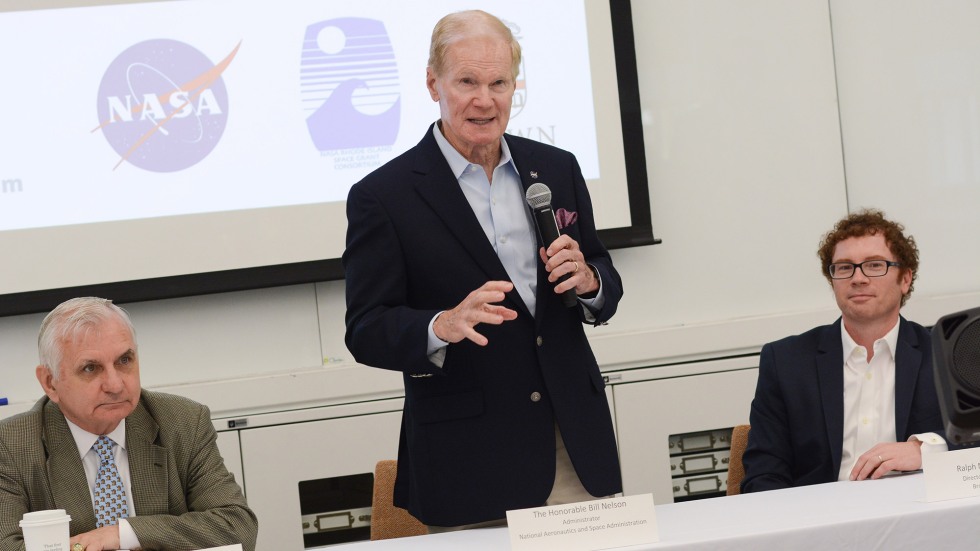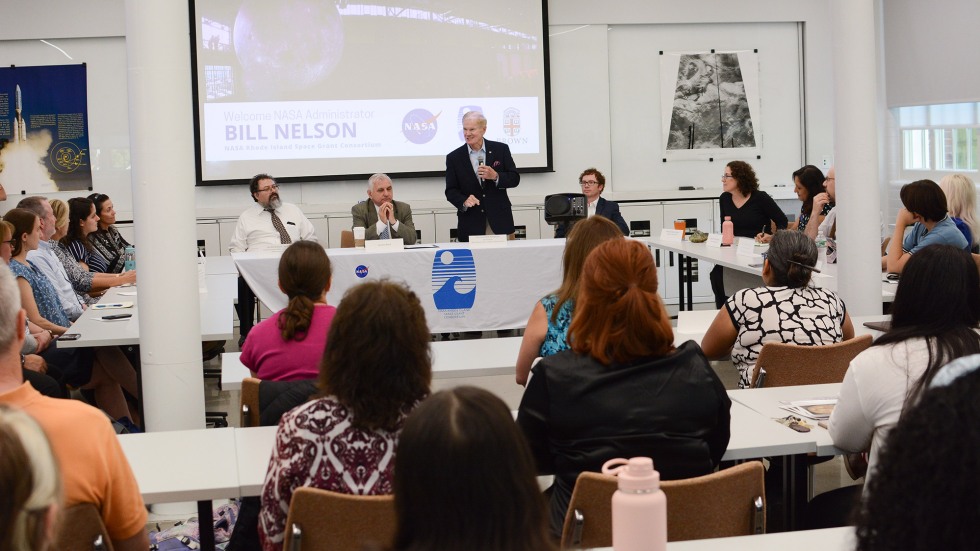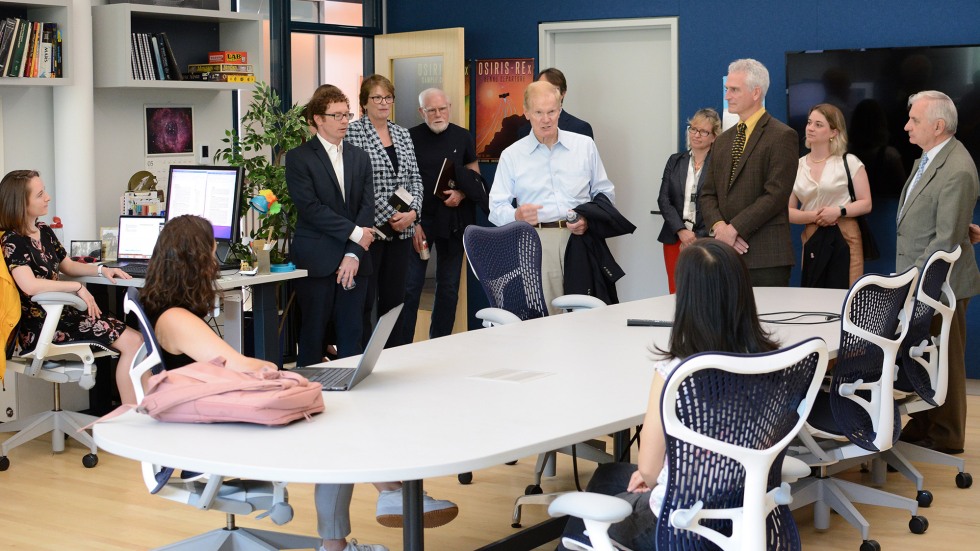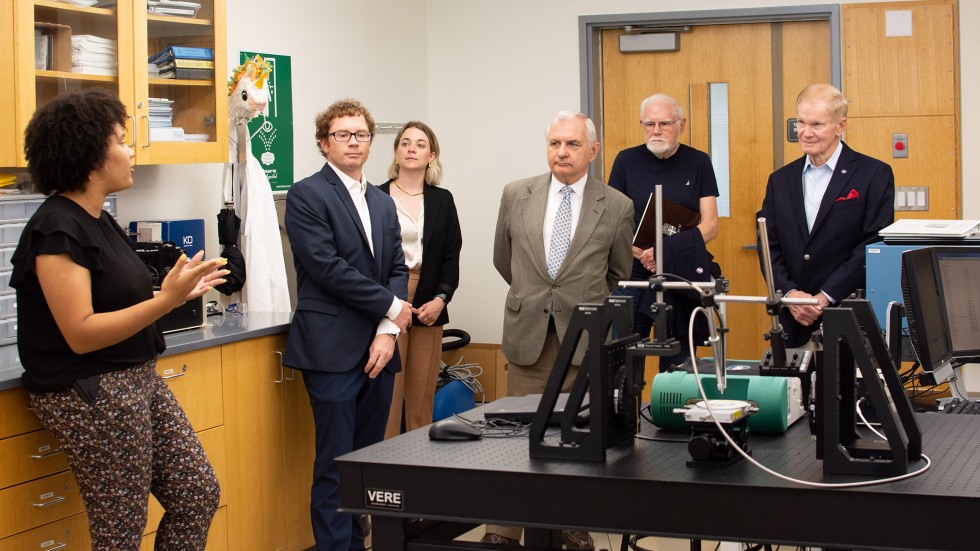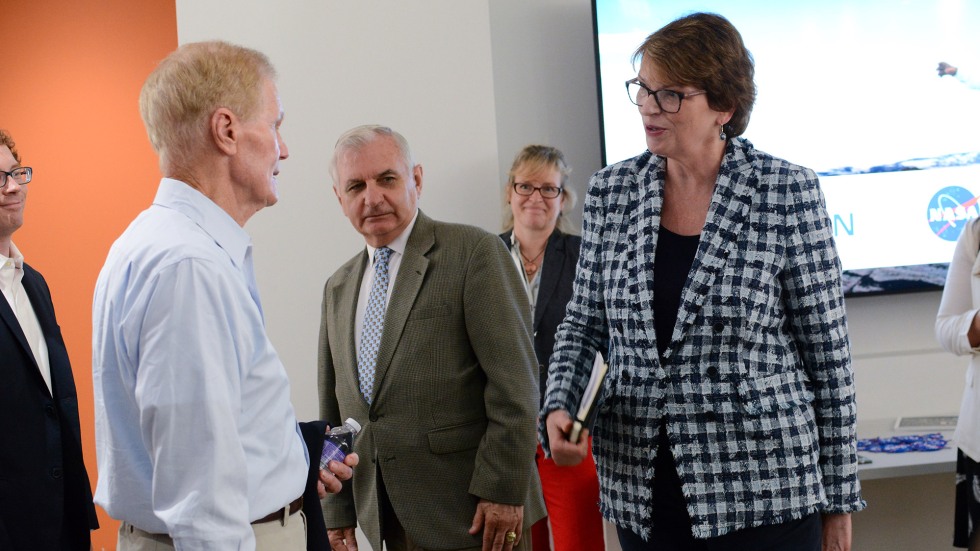PROVIDENCE, R.I. [Brown University] — On a special visit to the Brown University campus, the head of NASA toured the home of Brown’s Department of Earth, Environmental and Planetary Sciences and met with planetary scientists, scholars and stakeholders engaged in NASA-funded research across Rhode Island.
On Thursday, June 29, as part of a visit to Rhode Island led by U.S. Senator Jack Reed, NASA Administrator Bill Nelson toured the Lincoln Field building, where Brown’s planetary science program is based, and met with Brown faculty, students and University President Christina H. Paxson about NASA-funded projects led by Brown researchers and students.
During the visit, Nelson visited a number of labs and spoke with Brown scientists about their research, including the measurement of planetary materials like asteroid samples, projects contributing to the Curiosity Rover mission on Mars, and both previous and ongoing lunar research that could influence upcoming missions to the Moon.
“Our partnership with universities and other governmental agencies and the private sector is absolutely invaluable for what we’re doing,” Nelson said. “Senator Reed and I just attended a laboratory where they were actually taking samples from the Moon and examining them for water content … that’s just amazing. It’s been an eye-opening experience.”
Nelson, a former astronaut and U.S. senator, is the 14th NASA administrator who has been leading the U.S. space agency since 2021.
After the tour, Brown held a public event for Nelson to discuss projects in Rhode Island that contribute to the U.S. space program and efforts that promote careers in STEM. He and Reed were joined by Brown faculty, local scholars, students, teachers and STEM leaders from around the state for a wide-ranging discussion about NASA and STEM education in Rhode Island.
